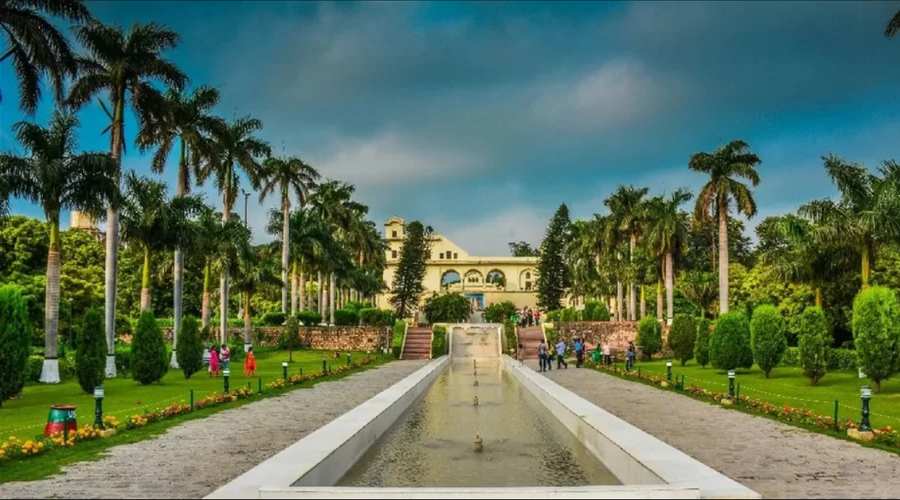In the midst of the sprawling urban expanse of Delhi and Noida lies a remarkable green oasis—the Okhla Bird Sanctuary. Nestled on the banks of the Yamuna River, this sanctuary is not just a retreat for thousands of migratory and resident birds but also a lifeline for people who crave a slice of nature away from high-rises, congested roads, and ceaseless city activity. Despite being surrounded by one of India’s busiest regions, it thrives as one of the most important wetland ecosystems in North India. Its significance transcends beyond birdwatching; the sanctuary stands as a reminder of the delicate balance between nature and urban growth.
The Origins and Location
The sanctuary is located at the Okhla barrage over the river Yamuna, touching the borders of Delhi and Uttar Pradesh. Declared a protected area in 1990 under the Wildlife Protection Act, 1972, Okhla Bird Sanctuary covers an area of approximately 4 square kilometers. Though it is relatively small compared to vast national parks, its ecological importance is immense because of the diversity of bird and plant species it supports.
Its geographical position—right in the migratory route of many birds traveling from colder regions of the world—makes it a critical stopover for species that journey thousands of kilometers each year. During peak winters, the sanctuary becomes a vibrant mosaic of feathers, colors, and sounds, as birds from Central Asia, Europe, and the Himalayan regions flock here to escape the harsh winters.
Rich Bird Diversity
The sanctuary is home to over 300 bird species, making it one of the prime birdwatching destinations in India. It attracts both ornithologists and casual nature lovers who find delight in spotting rare and endangered birds.
Among notable residents are species like the white-rumped vulture, Baikal teal, Sarus crane, Baer’s pochard, and Indian skimmer, all of which emphasize the global ecological importance of the sanctuary. During winter migration, colorful guests such as northern pintails, common teal, and shovellers become regular visitors, creating a breathtaking spectacle for visitors.
What truly fascinates bird enthusiasts is that the sanctuary harbors both aquatic and terrestrial avian species, owing to the coexistence of water bodies, marshlands, grassland patches, and patches of trees within its geographic boundaries. This mix of natural habitats adds to its biodiversity richness.
Flora and Habitat
While birds may be the center of attraction, the sanctuary also boasts a variety of plant species that complete its delicate ecosystem. Reed beds, aquatic plants, marshy grasses, and patches of woodland provide food, nesting areas, and shelter for numerous species. The Yamuna wetland, rejuvenated by flood waters, serves as a lifeline for aquatic vegetation, which in turn nurtures invertebrates and fish, forming the base of the food chain. Without this ecological network, the bird populations could not sustain themselves in such high numbers.
Significance to the Region
The sanctuary is much more than a tourist destination; it performs ecological services vital for urban sustainability. Wetlands like Okhla act as natural water purifiers, filters for sediment, and refuge spots that mitigate the impact of floods. In a concrete jungle prone to flooding and pollution, this sanctuary plays a silent but pivotal role in balancing urban development with environmental stability.
For the local population, especially those living in the high-density townships of Noida and South Delhi, the sanctuary serves as a refreshing escape. It is a place where joggers, photographers, students, and families connect with nature while learning about conservation.
Challenges Facing the Sanctuary
Despite its significance, Okhla Bird Sanctuary faces immense pressure due to its urban surroundings. Rapid urbanization, rising pollution of the Yamuna River, and expansion of transport and residential projects have posed severe threats to its fragile ecosystem. Encroachment and waste inflow into the water have at times reduced the wetland quality, directly impacting bird populations.
Noise pollution, reduction of green cover around the sanctuary, and contamination from untreated sewage are additional challenges that need consistent attention. Some migratory bird species, which once arrived in large numbers, have seen declines, underscoring the urgent need for conservation efforts.
Conservation Efforts
Recognizing the significance of Okhla Bird Sanctuary, authorities have undertaken several measures to safeguard its biodiversity. Steps include strict protection under law, efforts to regulate pollution inflow into the Yamuna, awareness programs, and improvement of visitor-friendly facilities.
Eco-tourism initiatives have also been promoted, through which visitors can enjoy birdwatching without disturbing the fragile environment. Guided nature walks, photography camps, and workshops are increasingly being organized to improve public awareness about bird conservation.
Additionally, the sanctuary has become an important research site where ornithologists and students conduct population studies and ecological surveys. Such work helps monitor trends in migratory behavior and threats, forming the basis for policy decisions aimed at protecting these vulnerable habitats.
The Visitor Experience
Visiting Okhla Bird Sanctuary is nothing short of a refreshing experience. The best time to explore it is between November and March, when migratory birds arrive in large numbers, offering countless opportunities for birdwatching and photography. Early mornings are especially magical as the sanctuary echoes with bird calls while mist rises above the Yamuna wetlands.
The sanctuary also offers well-demarcated walking trails, watchtowers, and resting spots that enhance the experience for tourists. Entry is regulated with nominal fees, ensuring that the sanctuary remains protected while also being accessible to nature enthusiasts.
Looking Ahead
Okhla Bird Sanctuary stands at the crossroads of development and conservation. It exemplifies how small natural spaces can have large ecological consequences in the urban landscape. The continued existence of such sanctuaries is vital not only for bird species but also for human populations that rely unconsciously on the ecological services these wetlands provide.
Strengthening conservation laws, reducing pollution in the Yamuna River, and involving citizens in preservation efforts are essential steps toward ensuring that Okhla Bird Sanctuary continues to thrive. With collective awareness and responsibility, this haven of biodiversity can continue to flourish despite its location amidst two busy metropolitan cities.
Conclusion
Okhla Bird Sanctuary may not cover vast tracts of wilderness like India’s famous national parks, but its importance cannot be overstated. Amid the growing clamor of concrete and machines, it offers a tranquil escape, a reminder that nature and development must coexist. With its rich birdlife, serene wetlands, and educational opportunities, the sanctuary instills hope for conservation even in the heart of urban chaos.


